EMD E-units In Freight Service |
|||
|---|---|---|---|
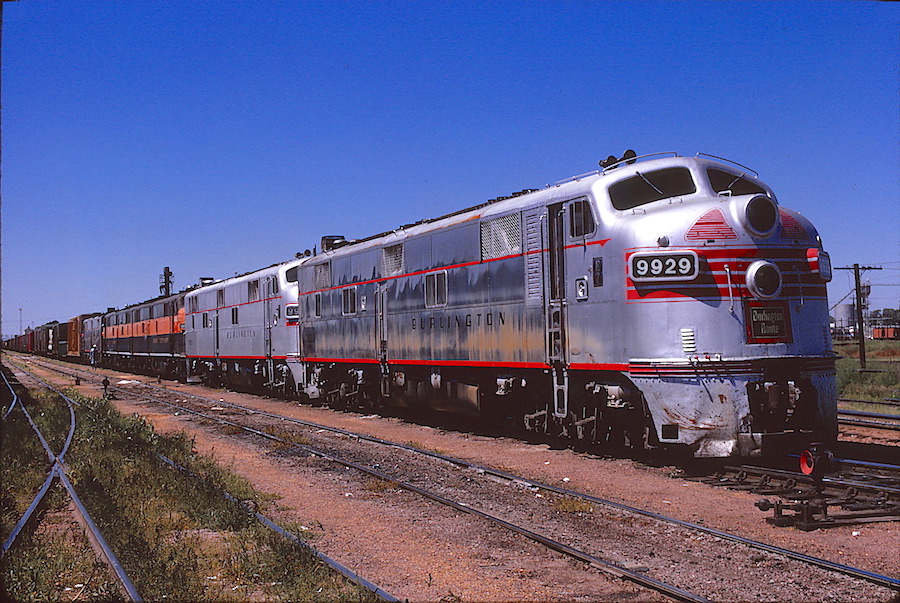 John Stubblefield photo at Lincoln, Nebraska on 25 August 1970 (R. Craig collection) |
|||
|
1964 was less than two weeks old, when EMD applied the builders plate to Union Pacific #914A,
the last new E-unit to ever leave the assembly halls at the McCook, IL plant. An era had ended
that witnessed the construction of more than 1200 streamlined six-axle cab units that were
designed to haul colorful passenger consists across North America.
The passenger train on many railroads had been already fighting to stay alive. During
the post-World War II years (1945-1964), rail passenger business had declined by a whooping
84 percent -- excluding commuter traffic. Older model E-units from the mid-1930s, 40s and early
50s had been retired / scrapped or used as trade-in fodder for modern freight power.
As the number of passenger train discontinuances increased, a few railroads elected to transfer
road worthy E-units to freight service. Additionally, the advent of Amtrak in 1971 led to many
E-units on the nation's railroads being surplus and placed in the freight pool. The experiment
was frequently short-lived in most cases. From a financial perspective, this interim approach
enabled a railroad to maximize the value of its locomotive dollars.
Fortunately, several photographers were able to capture the stylish six-axle EMD passenger
units on freight manifests before the phenomena ended. Take a look! | |||
| Photo Gallery | |||
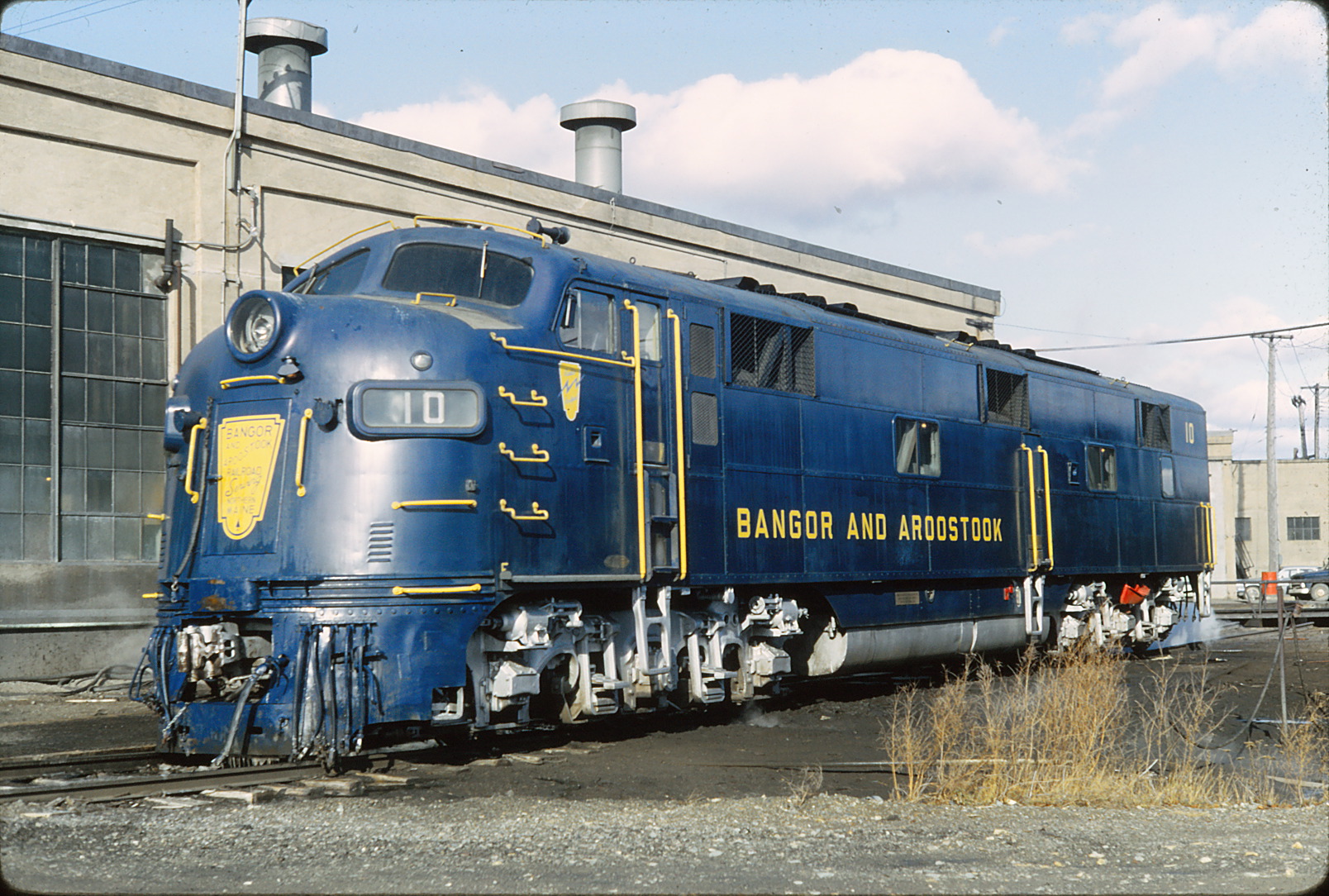 Bangor and Aroostook was one of the first railroads to adopt the practice of E-units in freight service. With the discontinuane of passenger service in 1961, its two E7As (#700 & 701) were regeared and repainted into the railroad's sold blue freight color as #10 and 11. They remained as such until used as trade-ins five years later. B&A E7A #10 at N. Maine Jct on 22 November 1964. (Karl C. Henkels photo / R. Craig coll.) |
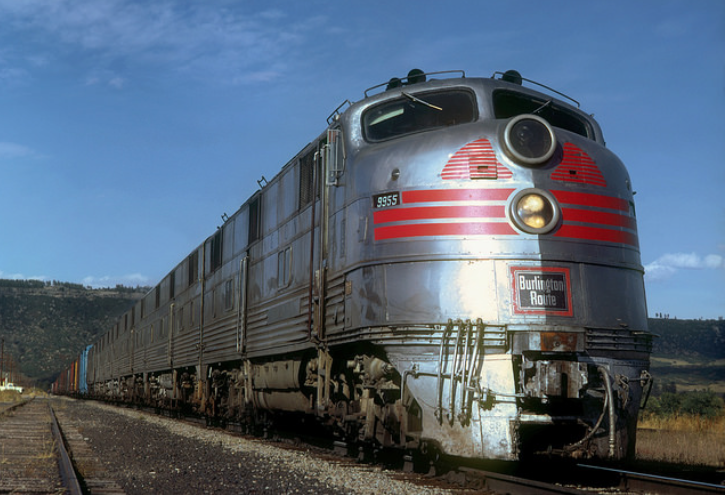 CB&Q affiliate, Colorado & Southern, was not hesitant to place it's E-units into freight service. When the railroad recognized passenger revenues on its primary route between Denver and Texas was faltering, C&S pressed its aging E-units in to hauling hot mail trains and time-sensitive freights. C&S E5A #9955 at Larkspur, CO in October 1967 (H. C. Christ photo / Chuck Zeiler collection) |
||
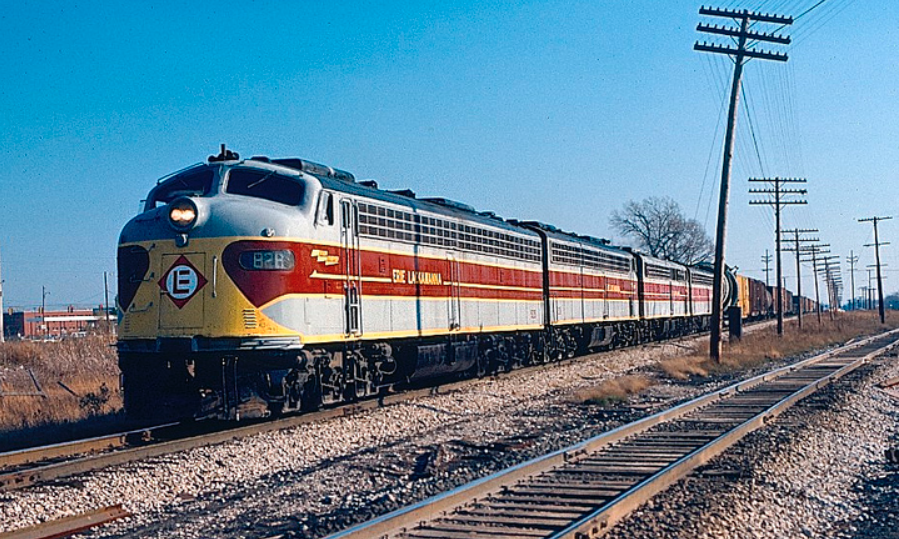 One of the places where E-units could be often found hauling freight was the Erie Lackawanna's daily westbound transfer run between Griffith, IN and the Milwaukee Road in Bensonville, IL or Belt Railway of Chicago at Bedford. EL E8A #828 at Hammond, Indiana on 19 November 1975 (Bill Johnson) photo |
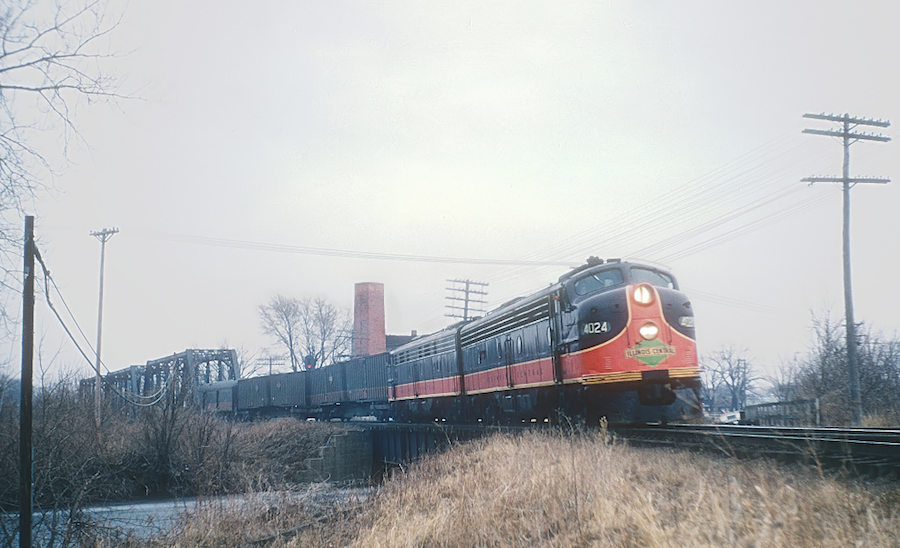 For a brief period, Illinois Central employed E-units on mail and intermodal trains. Photo above depicts IC #4024 leading Mail Train 13 westward. Similar to others railroads, U.S. Government mail contracts subsidized this daily run. IC E8A #4024 at Cedar Falls, Iowa in May 1967(Rick Burns photo / Marty Bernard photo) | ||
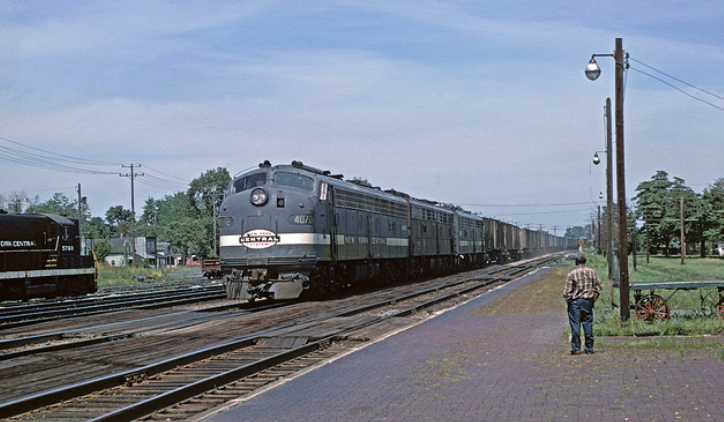 The hotest trains on the New York Central's "Water Level" route for a few years were Mail Trains 5 and 8. Three six-axle E-units were frequntly employed to protect the priority scedule. NYC E8A #4072 at Painesvile, Ohio in August 1968. (Glenn Anderson photo) |
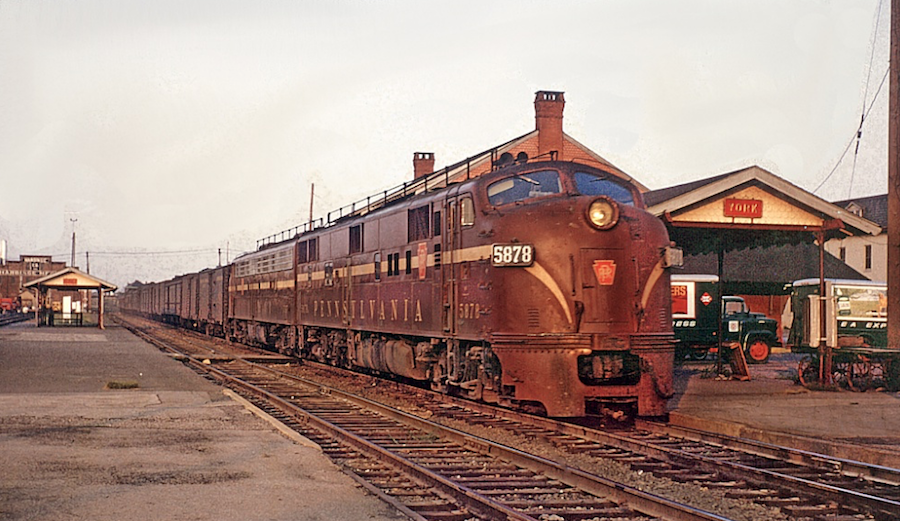 The Pennsylvania railroad introduced its "Truc-Train" service in 1955. Known as TT-1 and TT-2 the intermodal hotshot ran between Kearney, NJ and Chicago. Typically powered by new fou-axle road units, aging E-units sometimes drew the honor. PRR E7A #5878 leads a mail train. (Unknown photographer) |
||
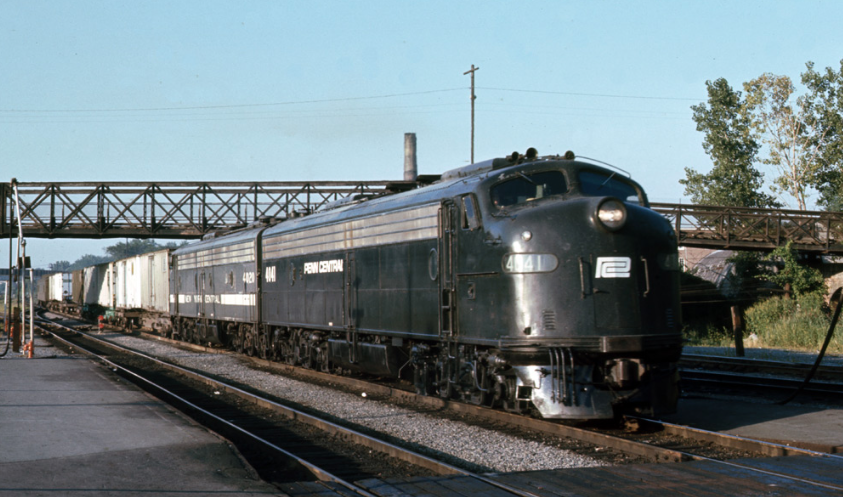 The two-year-old Penn Central was hindered substantially by an aging motive power roster and lack of funds to purchase new reliable power. The result was E-units pressed into freight service. PC E8A #4041 at Albany, New York during Summer 1970. (Jim Odell photo / Gardiner Cross collection) | 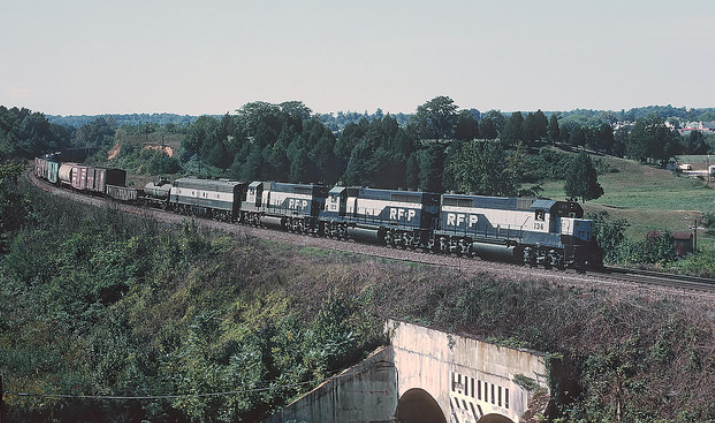 "Linking North and South," the Richmond Frederickburgs & Potomac was a 118-mile bridge line; and it was well respected for on-time performance, which on occasion meant mixing four and axle power. E8A #136 at Fredericksburg, Virginia in October 1971. (Roger Puta photo / Marty Bernard collection) | ||
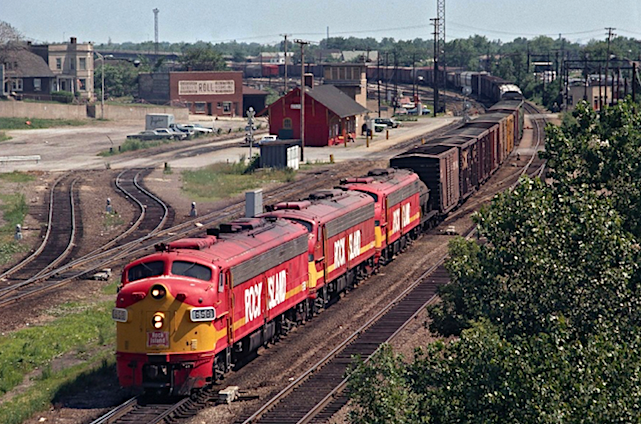 Rock Island's bankruptcy often left them starved for power, which in turn led to some interesting train watching. For example, three E-units with freight detouring on the CB&Q due to flooding of RI tracks. Rock Island E8A #658 east of Rochelle, Illinois on 27 May 1974. (Mark Hinsdale photo) |  While photographing F-units one afternoon at Rock Island's "Rocket House", a CRI&P freight train rattled-by with a very interesting ensemble of locomotives: An Alco C415, EMD E8B, and a EMD-ized RS3m. Rock Island E8B #620 at Chicago, Illinois on 2 June 1970. (R. Craig photo) | ||
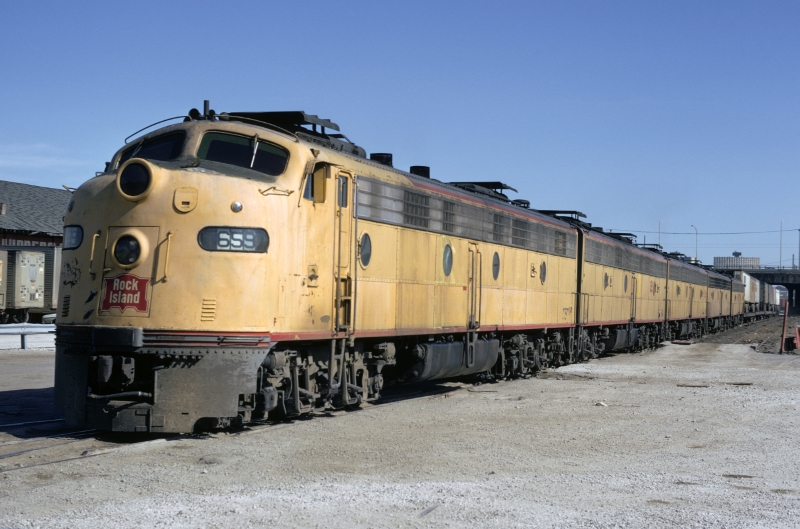 Union Pacific retired and sold five E8As, eight E8Bs, and four E9As to the Rock Island during 1969. The Rock Island used some of the re-geared passenger units in inter-modal freight service, such RI E8 #959 (ex-UP #935) spotted in Chicago, Illinois in October 1972. (Jim Jeffery photo / Ralph Back collection) | 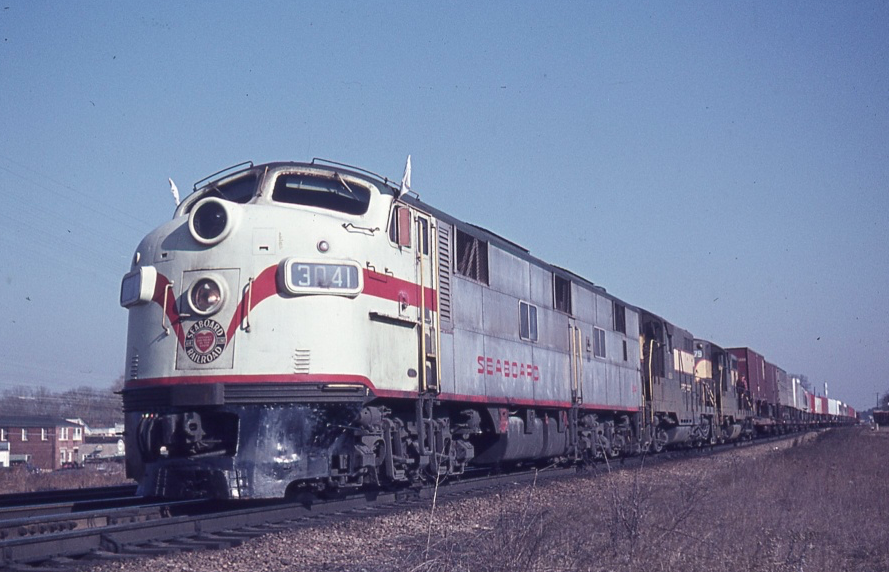 Seaboard Air Line was one of the railroads to adopt early the practice of employing E-units on the point of freight manifests. This January 1963 shot of SAL E7A #3041 leading an inter-modal train at South Norlina, North Carolina is just such an example. (Wiley Bryan photo / Joe Seffner collection) | ||
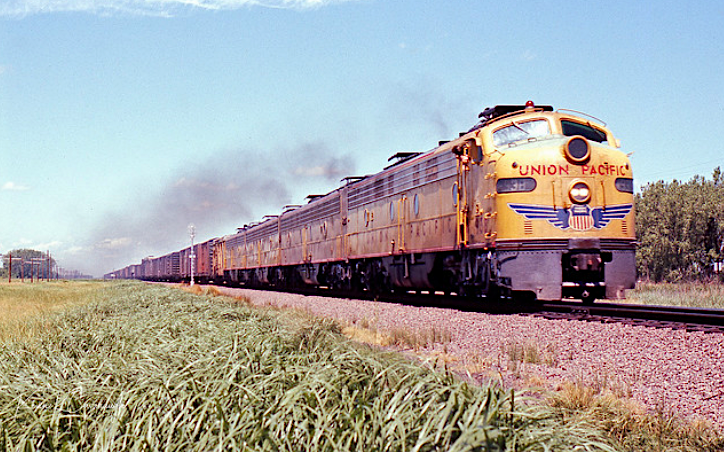 On the last day of June 1971, the photographer encountered an eastbound Union Pacific freight powered by four E-units; Amtrak's start-up two months earlier created surplus E's on many railroads. UP E8A #938 east of North Platte, Nebraska in the Summer of 1971. (Kevin Cavanaugh photo) |
Sources:
Formatted by: R.Craig New: 1 November 2020 / Revised 6 March 2022 | ||